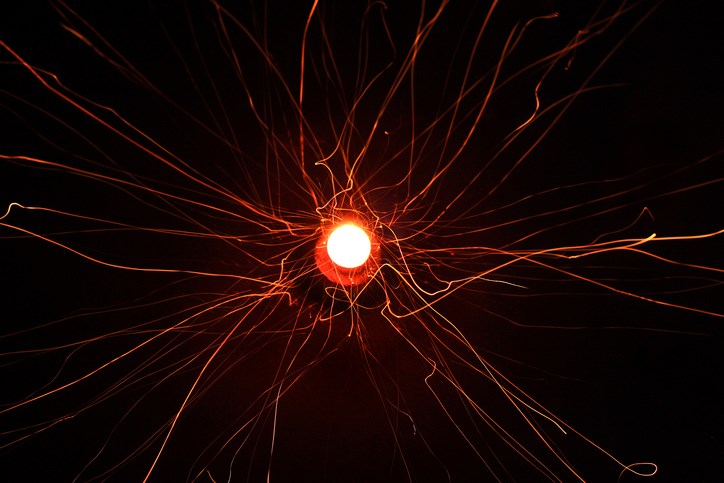While I was following the southeast energy discourse for a long time, last week was the first time I got to attend a local talk about nuclear power and small modular reactors.
Al Shpyth's presentation was indeed informative and interesting (learn more on Page A11), but potential emotions people might have here when it comes to nuclear energy – which were acknowledged at the beginning of the event – didn't resonate with me.
Unlike many people from the area or even the province, I've experienced both emotional poles of nuclear, be it power generation or weapons (whose designs are completely different, by the way), in my life.
On the one hand, I was growing up in the post-Cold War space, where the nuclear war threat was still real. I assume it was so for many people who caught the Cold War times here. But I was also growing up in the post-Chornobyl space, where people have seen firsthand what radiation can do. The accident and its aftermath affected my loved ones, as my family believes the radiation wave hit one of my aunties, who was a young girl residing in Belarus at the time.
Following the Cold War, during the '90s when I was a kid, there were really scary social commercials on TV about how the post-nuclear world would look. I don't know if there was anything similar here, but for my young imagination, those clips were terrifying. They looked like cartoons, which attracted kids to the screens, but those cartoons were colourless and showed the world where nothing really existed anymore, people melted, and separate objects just rolled through the grey, dark desert.
Since my early years, I knew radiation was evil, scary and very dangerous.
But on the other side, I grew up knowing that nuclear power, when built and operated properly, is a reliable source of energy. (That notion seems like something not so normal for people here.) And that's because my home city of five million used the huge Leningrad Nuclear Power Plant, located less than 100 kilometres away, for over 55 per cent of its own as well as the Leningrad area's power supply.
That plant was the first in Russia to operate the RBMK (which stands for high-power channel reactor and is similar to what was used in Chornobyl) type of reactor. The big plant originally had four nuclear reactors.
In 2008, the construction started of Leningrad II with two different reactors meant to replace the older RBMKs. The first one became operational in 2018. Two older reactors have now stopped and will eventually be decommissioned.
Being young, we'd drive to Sosnoviy Bor – the town with restricted access, where the plant is located – to come closer and see it firsthand. It probably wasn't the smartest thing to do, but the plant was impressive.
Don't get me wrong, the Leningrad NPP's operation was by no means flawless, especially with the RBMK type of reactors, which never were the most stable. Besides, it was built in 1967, and a lot of the issues it had during the Soviet times were covered up, resulting in greater and extended damage.
It's seen accidents and issues. There were fatalities, and there was a similar-to-Chernobyl accident that preceded the later one. The reactor's instability wasn't properly addressed in Leningrad NPP.
Once the Soviet era was over, more transparency helped improve the operation and make it safer.
But even though it wasn't flawless, it never was disastrous. Nowadays everyone is aiming at zero accidents, but they still happen in any industry.
In my lifetime, the plant was operating fine most of the time with minor issues. I remember when I was working as an editor in St. Petersburg and reports or rumours about potential problems at the Leningrad NPP came in, we'd send reporters with Geiger counters (devices to measure the amount of radioactivity) to different areas of the city and outside it to see if there was any impact. It always remained at what you'd expect to see in the area.
I understand the general worry of nuclear power, which is probably re-ignited even more now by Putin's threats of the red button. But when it comes to energy production, the process is very different. Yes, mistakes happen. But things like Chornobyl and Three Mile Island are hopefully mistakes that are never to be repeated. The Chornobyl catastrophe was the product of a severely flawed Soviet-era reactor design combined with a human blunder. And in Three Mile – the most serious accident in U.S. commercial nuclear power plant operating history – while the Unit 2 reactor partially melted down, its small radioactive releases had no detectable health effects on plant workers or the public.
Those accidents and their aftermath brought about sweeping changes in engineering, training, operations, emergency response and regulations of nuclear power generation, affecting the safety of people involved and those around.
So, being used to living next door to an old-style nuclear plant, when it comes to SMR technology, all I can see are the benefits. Yes, price- and construction-time-wise they still have a ways to go, but safety, efficiency and cleanliness seem like big fat pros to me, even though my fear of radiation is still with me.



